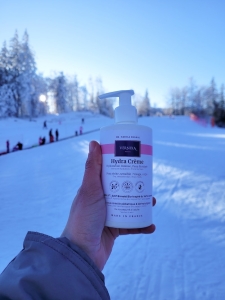Reading Time: mins
It's well understood that men and women can differ in profound ways that influence their skin, discerning far more than superficial nuances. From genetic structures to hormonal variabilities, each sex exhibits specific skin characteristics. The distinctions between male and female epidermis are not just a question of biology, but also of skin care responses, predisposition to skin conditions and treatment methods.
Scientific research is helping us to understand how different levels of testosterone and estrogen influence skin texture and quality from puberty onwards, leading to permanent changes during adolescence and then maturity. This recognition of variations can be crucial to the application of specific personal and professional skin care products.
Hormones, such as testosterone and estrogen, play an undeniable role in shaping skin characteristics. The former, in high concentration in men, results in thicker and sometimes oilier skin, contributing to the overproduction of sebum. Elements such as severe acne and dilated pores are commonly observed in adolescent men, and can persist with age.
In women, high levels of estrogen contribute to thinner, drier skin, which may benefit the appearance of acne, but increases susceptibility to premature aging and wrinkles. These properties are essential for formulating different approaches to skin care and gender-specific dermatological treatments.
Collagen, the main structural protein in the human dermis, also varies according to gender. Men, with generally higher collagen density, show superior skin resilience, delaying the onset of visible signs of aging. After the menopause, women experience a significant reduction in collagen production, which accelerates the development of wrinkles and the loss of skin elasticity.
Managing collagen levels can thus play a pivotal role in anti-aging care regimens, especially in women, and requires specialized products that support collagen synthesis or preserve its breakdown.
Skin thickness varies between the sexes, being generally greater in men. This characteristic influences not only resistance to external elements, but also skin reaction to cosmetics and treatments. Thick skin in men offers increased protection, but can also be a breeding ground for excessive sebum production, leading to problems such as clogged pores and acne.
In women, thinner skin can be more delicate and susceptible to respiratory damage, requiring a gentler, more moisturizing approach to daily skin care. Understanding and applying these nuances to skincare production can help optimize skin health and beauty results for each gender.
Many of the functional differences between male and female skin can be attributed to the biology of sebum production. This substance, essential for skin lubrication and maintenance, is distributed differently between the sexes. This biological factor not only influences skin care methods, but also the dermatological solutions required to treat the various problems that emerge as a result of such differences.
In-depth knowledge of gender-based skin differences not only enables better diagnosis and more appropriate interventions, it also promotes a personalized and effective approach to skin care. By integrating this knowledge, professionals and amateurs alike can best respond to the specific needs of each gender, thereby increasing the health and satisfaction of each individual's skin.
All Rights Reserved | Tous Droits Réservés GTIN Compliance Hydra Lavant | GTIN Compliance Hydra Crème



